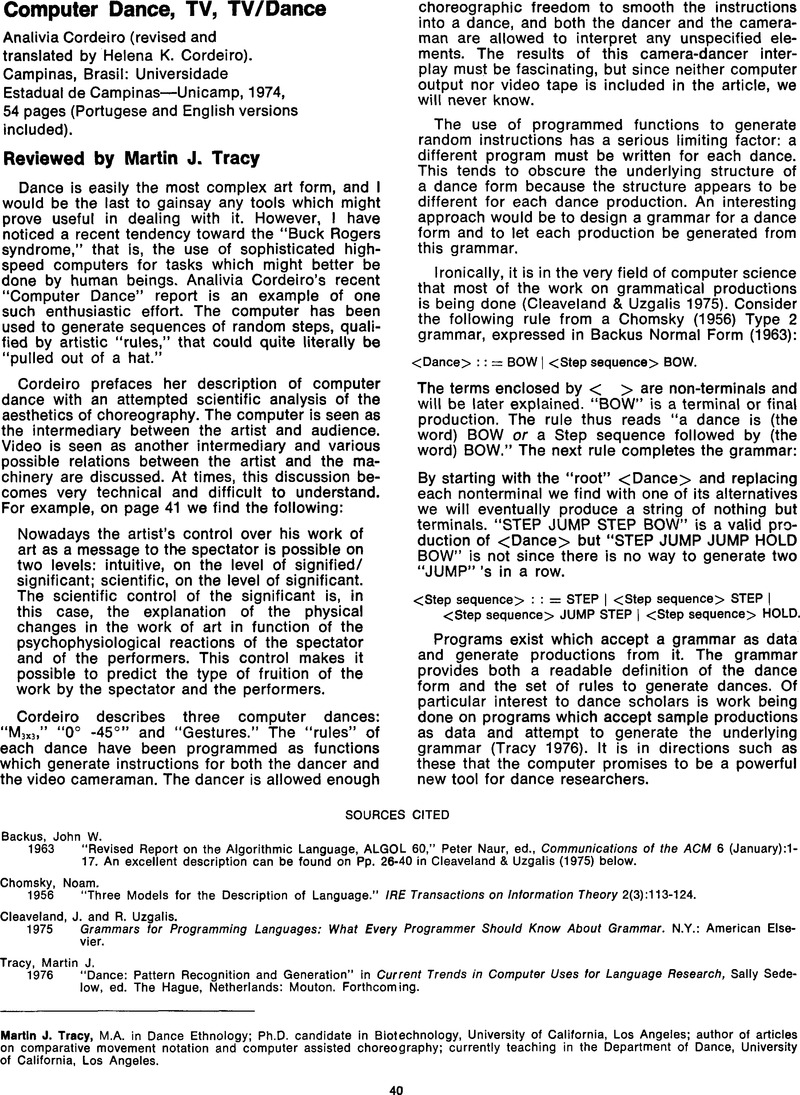No CrossRef data available.
Article contents
Computer Dance, TV, TV/Dance Analivia Cordeiro (revised and translated by Helena K. Cordeiro). Campinas, Brasil: Universidade Estadual de Campinas—Unicamp, 1974, 54 pages (Portugese and English versions included).
Published online by Cambridge University Press: 22 July 2014
Abstract
An abstract is not available for this content so a preview has been provided. Please use the Get access link above for information on how to access this content.

- Type
- Reviews
- Information
- Copyright
- Copyright © Congress on Research in Dance 1976
References
SOURCES CITED
Backus, John W. 1963 “Revised Report on the Algorithmic Language, ALGOL 60,” Naur, Peter, ed., Communications of the ACM 6 (January):1-17. An excellent description can be found on Pp. 26–40 in Cleaveland & Uzgalis (1975) below.Google Scholar
Chomsky, Noam. 1956 “Three Models for the Description of Language.” IRE Transactions on Information Theory 2(3):113–124.CrossRefGoogle Scholar
Cleaveland, J. and Uzgalis, R.. 1975 Grammars for Programming Languages: What Every Programmer Should Know About Grammar. N.Y.: American Elsevier.Google Scholar
Tracy, Martin J. 1976 “Dance: Pattern Recognition and Generation” in Current Trends in Computer Uses tor Language Research, Sedelow, Sally, ed. The Hague, Netherlands: Mouton. Forthcoming.Google Scholar




